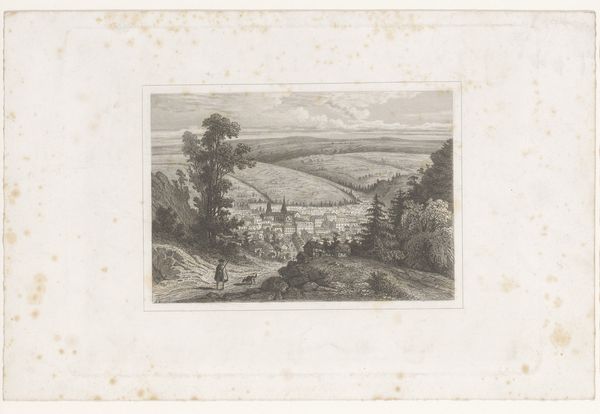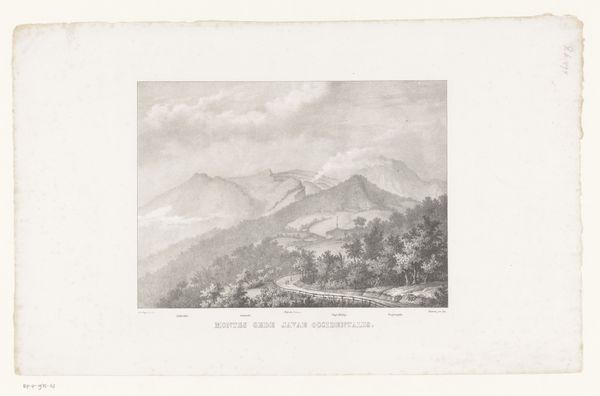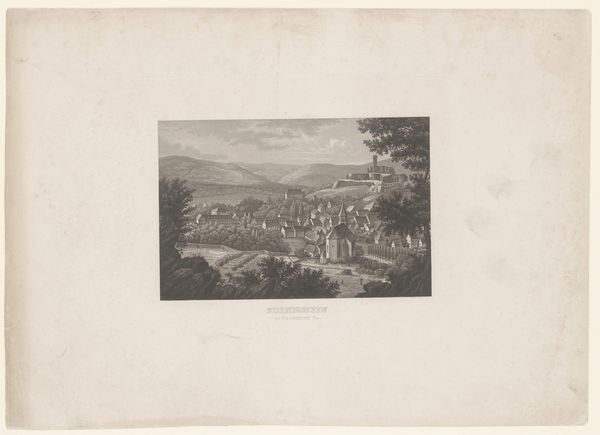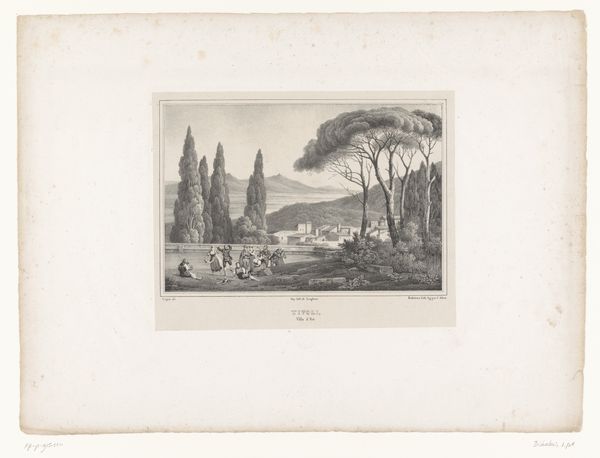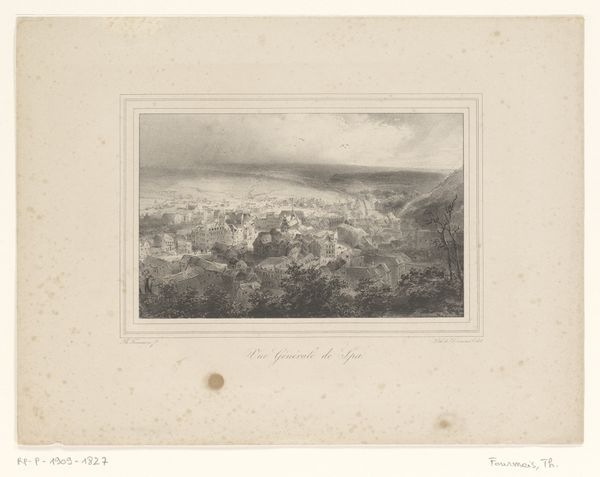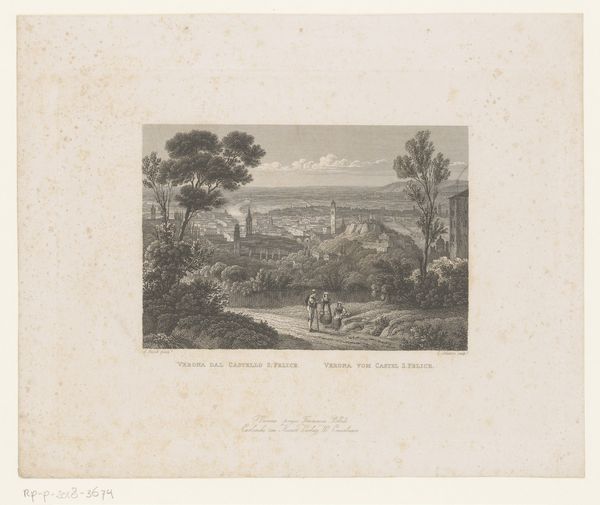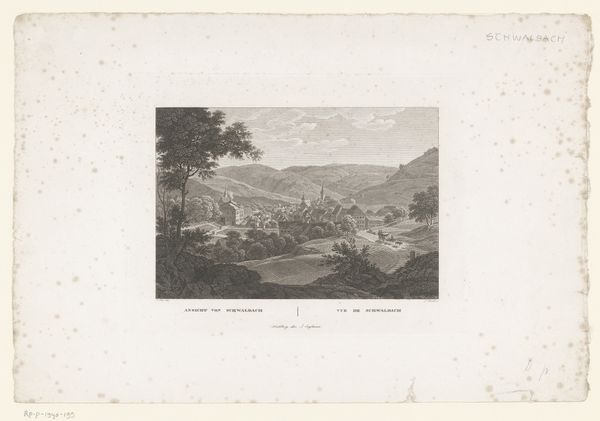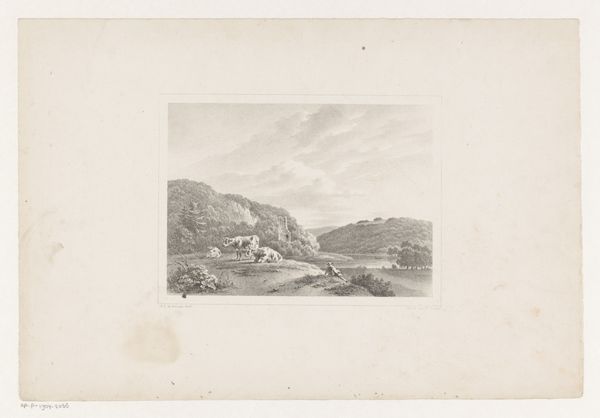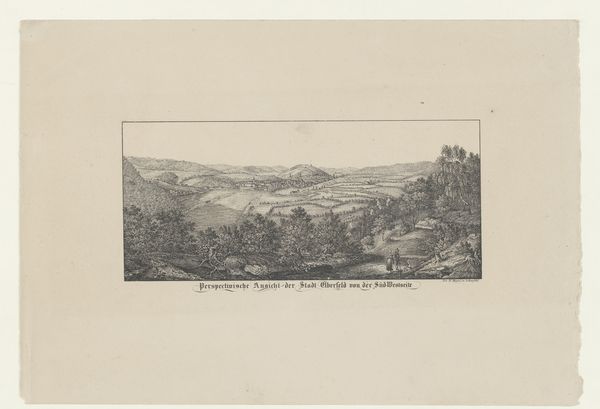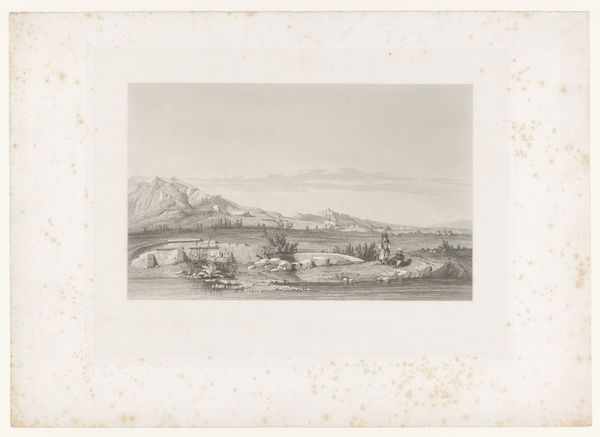
print, engraving
# print
#
landscape
#
romanticism
#
cityscape
#
engraving
Dimensions: height 357 mm, width 549 mm
Copyright: Rijks Museum: Open Domain
Curator: This is "View of Capri in the Bay of Naples," an engraving created in 1846 by Louis-Julien Jacottet. Editor: There's a certain melancholy beauty in this cityscape; a faded grandeur perhaps? The figures seem so small compared to the dominating presence of nature and the looming city. Curator: The romantic style lends itself to that feeling. Note how Jacottet used the engraving process to create gradations of light and shadow. It highlights not just the geographical details, but the very atmosphere of the place. One has to consider the socio-economic factors as well that allows Jacottet access to materials, skills, time, and patronage required for such creation, which likely wouldn't have been easily available for all sections of the society. Editor: Exactly! The image idealizes Capri as a picturesque site but it does that in the context of a colonial gaze. Who are those small figures along the road and what sort of labor do they participate in, to facilitate that "view" in the first place? Are they benefitting from the economic structure or marginalized by it? Curator: That's a sharp point. And even within the craft, consider the labor involved in printmaking itself – the engraver's skill and time spent transferring an image onto the plate, making each print. Editor: Thinking about it this way unveils layers of narrative, exposing disparities and challenging romanticized perceptions, especially around landscape art's association with national identity and power structures. Curator: Indeed, and the details of its production become another window through which to consider the values and structures inherent to both the artwork itself and the period in which it was made. Editor: Ultimately, the artwork urges us to contemplate beyond the image and connect it to socio-political dynamics. Curator: The relationship between the artist, the materials, and the social conditions of the time, opens further discussion to interpret artworks in relation to how and why they're made.
Comments
No comments
Be the first to comment and join the conversation on the ultimate creative platform.
